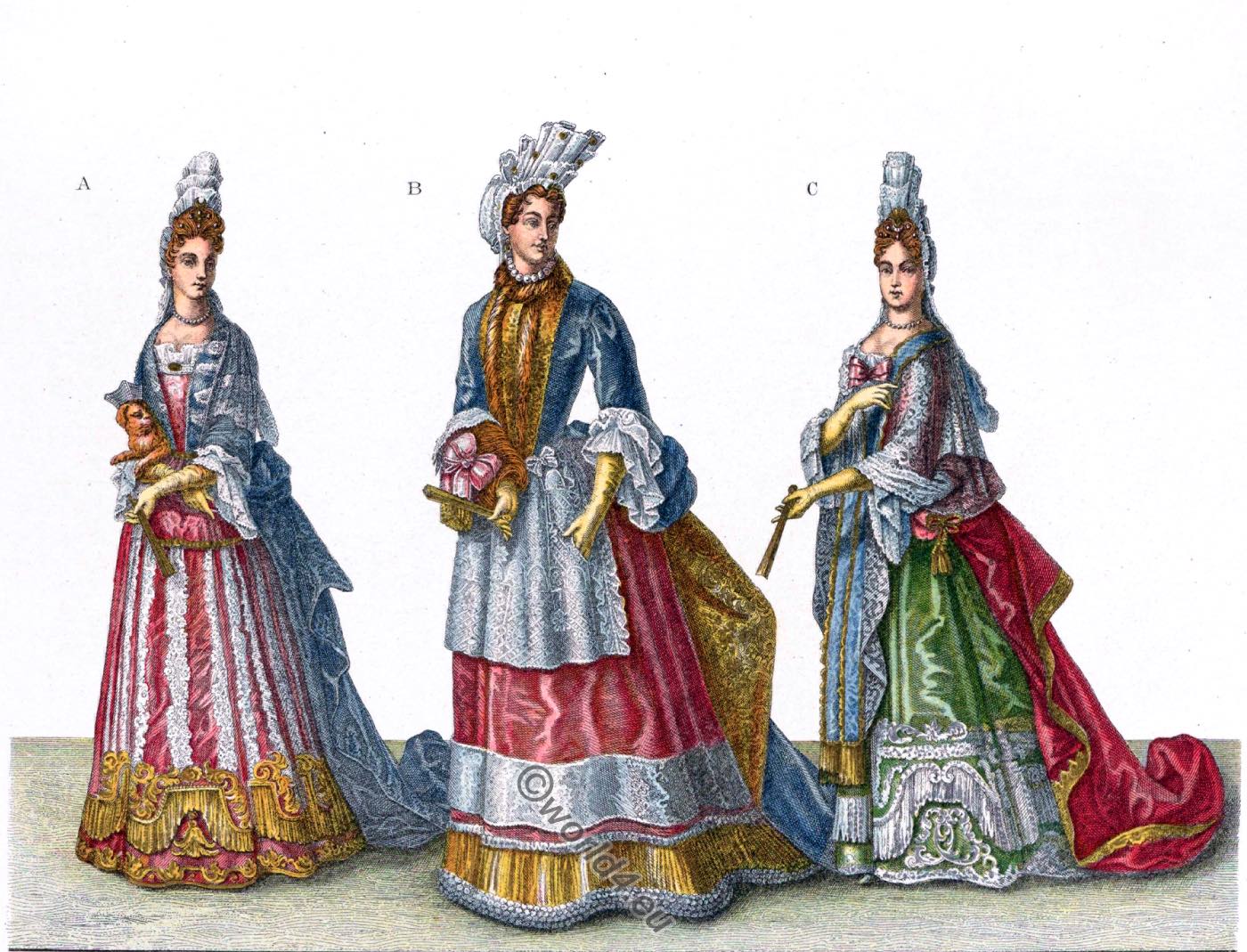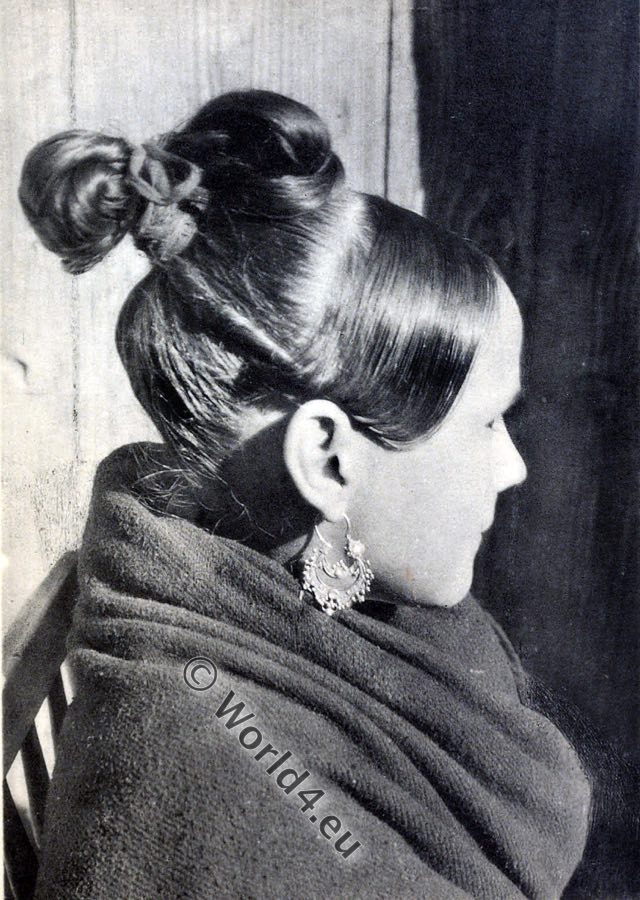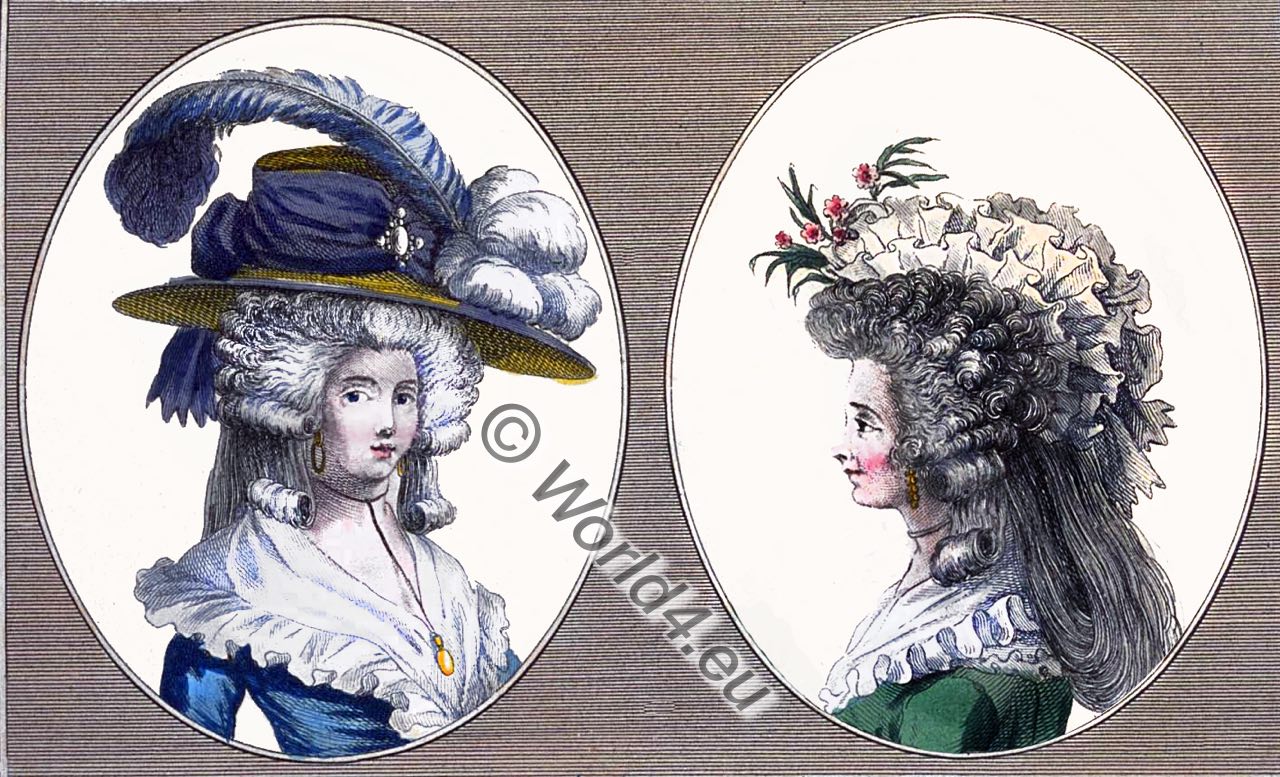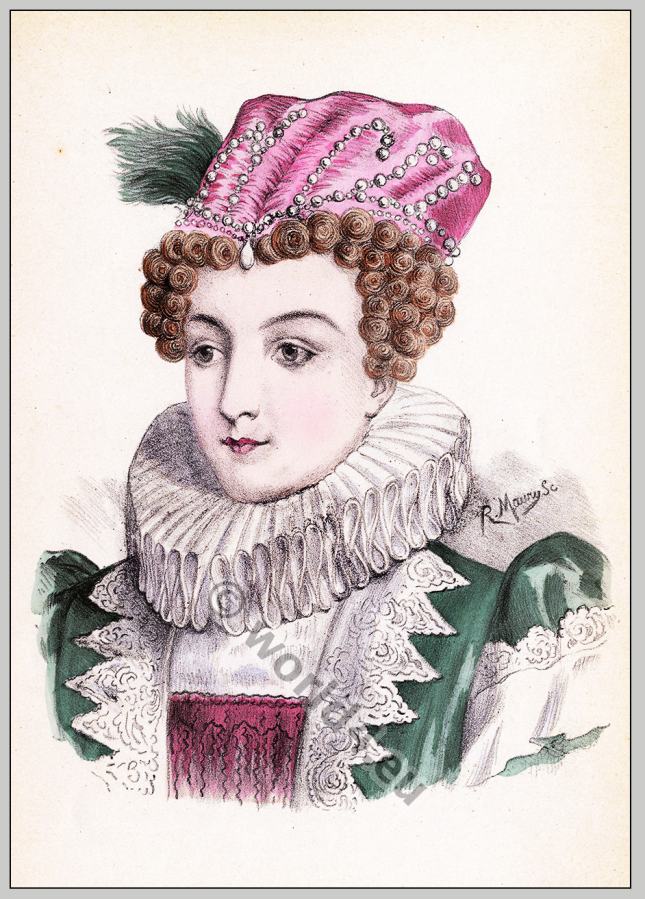
The origin of the coiffure à la Fontanges under Louis XIV.
Female fashion of the baroque in the 17th and 18th century.
Ladies of high standing in the transition from the 17th to the 18th century, after rare coloured copper engravings of that period. Although these engravings were widely used during this period, they have become a great rarity today. We reproduce these noble women not only because of the general costume under the reign of Louis XIV, but especially because of the hairstyle, called coiffure à la Fontanges.
Illustration A depicts a lady at the court of Louis XIV, striking both by the peculiarity of her wearing a pug with the biret (also beret) of a clergyman, and by the enigmatic signature of Mademoiselle … van Buysen.
B represents an Archduchess of Austria, daughter of Leopold I; a proof that German princesses also willingly accepted French fashion.
C is like the former a lady of the French court, whose name is unknown to us.
Marie Angélique de Scorailles, duchesse de Fontanges, born in 1661, honorary lady of the Queen Mother and mistress of Louis XIV, who made her a duchess in 1681. During a hunt she got caught on a branch, causing her hairstyle to become untidy; she took leaves and various ribbons from other ladies-in-waiting, thus arranging a high hairstyle which pleased the king and the whole of society very much, and from then on, under the name coiffure à la Fontanges, became fashionable not only in Versailles or Paris, but also in Germany, Italy and other countries for a long series of years, as evidenced by many portraits from those countries.
The term “Fontange” is also used by some writers for the hairstyle that goes with it or the combination of headgear and hairstyle. The “Fontange hairstyle” was a hairstyle in which the hair was curled at the front and worn high above the forehead in front of the Fontange (also Frelange), which was always higher than the hair. Sometimes the hairstyle was supported by a wire frame, a so-called pallisade.
The fontange hairstyles, with the exception of those of the early reign of Louis XVI, took on a truly unusual height to become a kind of passe-partout with the ingenious complicity of a curling iron.
The fontange consisted essentially of the “chest of drawers”, a kind of strip of cloth in the shape of organ pipes, which was placed over the hair and laid on the head. It was erected on the “palisade” or “monte-là-haut”, a metal box, a body of arched threads that carried the “commode” and was covered from behind by strips of gauze.
The hairs were not less artfully arranged, they differed according to their grouping by many different names: The “wood” was a bundle of spiky hair placed at the base of the palisade; the “jugs” were small tufts of hair extending across the forehead; the curls of hair placed on the cheeks were called “favorites”; at the temples they were the “passengers”; near the ear the “confidants”; the “crèvecœurs” were placed on the neck; hair twisted in intertwined folds was called the “tignon”, and others raised in tufts were called the “berger”.
The numerous ribbons that adorned this headdress were the “mouse”, a small knot of “nonpareille”, a very narrow ribbon placed in the middle of the “wood”, the “cabbage” at the foot of the palisade, the “murderers”, the duchesses, etc. The “crèvecœurs” were placed on the neck; the hairs twisted into twisted folds were called “tignon”, and others were raised to a tassel, the “shepherds”. In addition to all the parts that made up the skilful building that women wore on their heads at the time, there were long diamond headpins called “wasps” and “butterflies”.
Source: Traditional costumes, works of art and tools from the early Middle Ages to the end of the eighteenth century, after simultaneous originals by Dr. J. H. von Hefner-Alteneck. Published by Heinrich Keller. Frankfurt a. M. 1879-1889.
Continuing
Discover more from World4 Costume Culture History
Subscribe to get the latest posts sent to your email.






